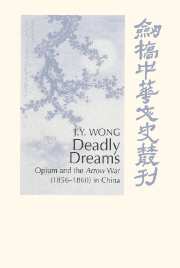Book contents
- Frontmatter
- Contents
- List of Tables
- List of Figures
- Poem by the late Mr Qin Esheng
- Foreword by Professor Wang Gungwu
- Foreword by Professor C. A. Bayly
- Preface
- Part I The confusion of imperialism
- An attempt to peel the onion of confusion
- Part II The pretext for imperialism
- Part III The personalities of imperialism
- Part IV The rhetoric of imperialism
- Part V The mechanics of imperialism
- Part VI The economics of imperialism
- Part VII The dynamics of imperialism
- Chronology of major events
- Word list
- Abbreviations
- Bibliography
- Index
An attempt to peel the onion of confusion
Published online by Cambridge University Press: 29 September 2009
- Frontmatter
- Contents
- List of Tables
- List of Figures
- Poem by the late Mr Qin Esheng
- Foreword by Professor Wang Gungwu
- Foreword by Professor C. A. Bayly
- Preface
- Part I The confusion of imperialism
- An attempt to peel the onion of confusion
- Part II The pretext for imperialism
- Part III The personalities of imperialism
- Part IV The rhetoric of imperialism
- Part V The mechanics of imperialism
- Part VI The economics of imperialism
- Part VII The dynamics of imperialism
- Chronology of major events
- Word list
- Abbreviations
- Bibliography
- Index
Summary
I. The confusing events
It all began in 1856 with Thomas Kennedy, an Irishman from Belfast who nominally captained the Chinese crew of a lorcha called the Arrow. The lorcha had been built in China by a Chinese, owned by a Chinese, and sold to another Chinese. But to protect the ship from the Chinese authorities, a register had been obtained by paying the necessary fees to the British government in Hong Kong and Kennedy had been employed as the nominal captain.
Why was British protection necessary? An old China hand offered some clues. These vessels, he said, were well known by both the Chinese government and foreigners to be manned by inveterate smugglers. Generally these ships were very heavily armed and had a most formidable looking appearance. ‘Oftentimes the peaceful inhabitants in the little towns on the coast have complained bitterly to me of the lawless and tyrannical acts of their crews’, he added. ‘Are these crews to be allowed to commit all sorts of offences against their own government and people and then point to the flag of England … as their protection and as their warrant?’ he asked. In the case of the Arrow, it was subsequently proved that she had been engaged at least in receiving stolen goods.
- Type
- Chapter
- Information
- Deadly DreamsOpium and the Arrow War (1856–1860) in China, pp. 3 - 40Publisher: Cambridge University PressPrint publication year: 1998



